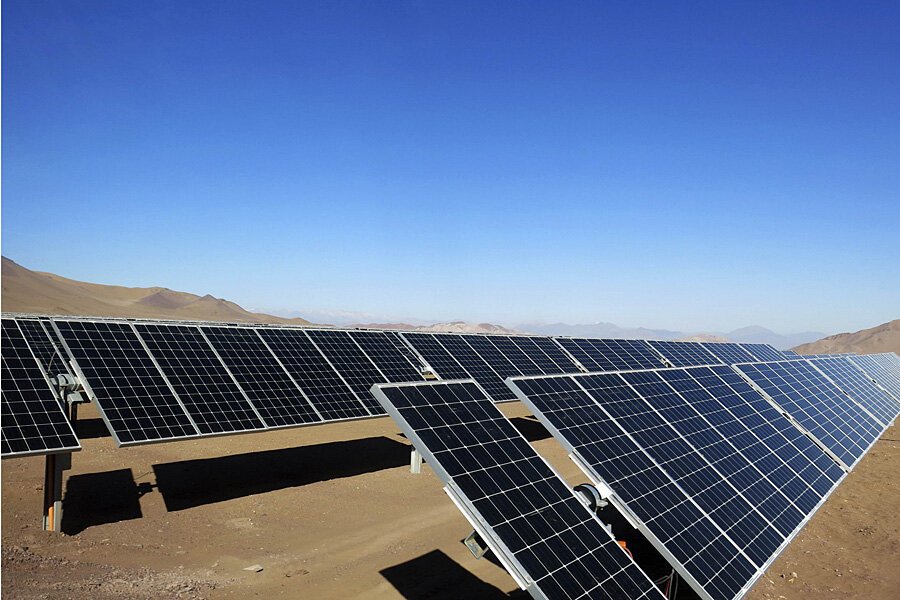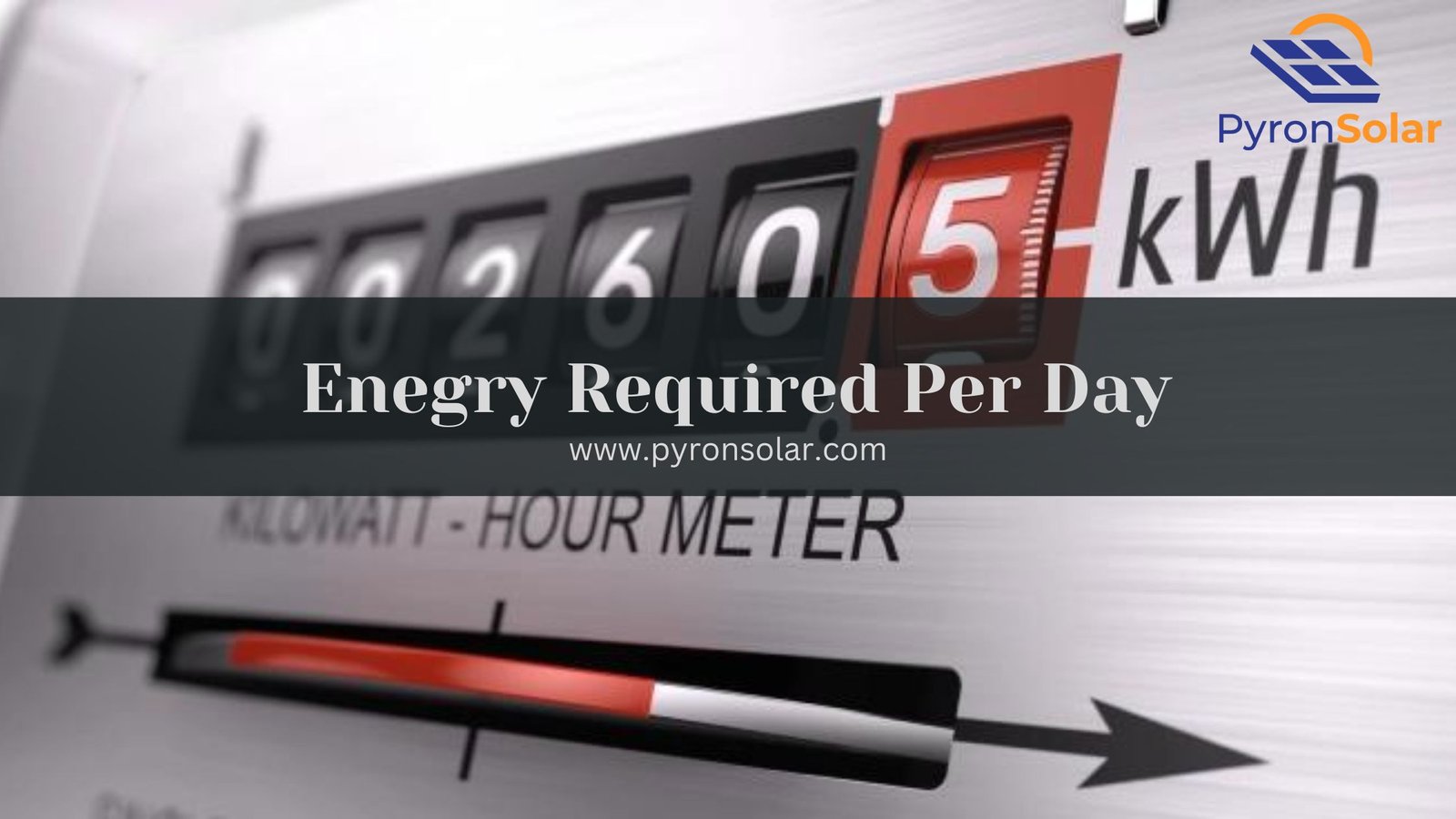Understanding how much electricity your home uses each day is essential for managing energy costs and planning for renewable energy solutions like solar power.
According to the U.S. Energy Information Administration (EIA), the average annual electricity consumption for a U.S. residential utility customer was 10,791 kWh in 2022, which breaks down to about 29.2 kWh per day. By knowing your daily energy usage, you can better understand your electricity needs and explore ways to improve energy efficiency and reduce costs.
In this article, I will take you through the basics of kWh and energy consumption, the formula and factors it depends on, and various methods you can use to keep your power consumption in check.
How Many Kilowatts Does It Take to Power a House?
To power a typical house in the United States, it usually takes about 30 kilowatt-hours (kWh) of electricity per day. This daily usage means that the average power requirement is around 1.25 kilowatts (kW) at any given moment. This figure is calculated by dividing the total daily energy consumption (30 kWh) by the number of hours in a day (24 hours).

It’s important to note that this is an average estimate and actual power needs can vary based on several factors. These include the size of the house, the number of occupants, the efficiency of appliances, and regional climate conditions.
For example, larger homes or homes with many high-energy appliances may require more power, while smaller, energy-efficient homes may use less. Understanding your home’s specific power needs can help you plan for energy efficiency improvements or the installation of a solar power system.
The Difference between kW and kWh
First, you should know the difference between kW and kWh. It is essential for managing your energy use, especially with solar power. A kilowatt (kW) measures the rate of power at any given moment. For example, a 5 kW solar panel system can produce 5 kilowatts of power when it’s running at full capacity.
On the other hand, a kilowatt-hour (kWh) is a unit of energy that measures the total amount of electricity used or produced over time. It tells you how much electricity is used or generated in an hour. If your 5 kW solar system runs for one hour, it will produce 5 kWh of energy.
To put this into context, consider how many kWh a typical house uses in a day. On average, a U.S. household consumes about 30 kWh per day. This means if you have a 5 kW solar system, it would need to run for about 6 hours to meet the daily energy needs of your home (since 5 kW x 6 hours = 30 kWh).
In summary, kW measures the instantaneous power capacity, while kWh measures the total energy used or produced over time. This understanding helps you optimize your solar energy system to meet your household’s energy needs effectively.
Here is simple formula to understand:
kWh = kW × hours
How Much Power Do the Electrical Appliances at Your Home Consume?
The usage of electrical appliances solely depends on and differs from one household to the other. It depends on the lifestyle one follows. With the median size of a home as 2,000 square feet and the average daily household power use (kWh) as 30 kWh, let’s analyze certain electrical appliances that every household has:
Depending on the circumstance, heating and cooling systems are quite energy-intensive. One typical 1800 W air conditioner running continuously for up to 8 hours may consume 14.4 kWh per day, which is approximately half the daily average. In the winter, 1500-watt space heaters can use up nearly as much electricity as air conditioning, if not more.
Another is a 5000w clothes dryer, washing machine’s (500w) and dryer (1800w–5000w) combined energy consumption might reach an astounding 3.5 kWh.
Next up are lighting fixtures that are a cunning source of power use. Using a 100-watt light bulb could result in daily energy use of 1 kWh, or 11.20 cents.
Moreover, depending on the features, a gaming laptop can consume between 300 and 500 watts, or 1 kWh, every couple of hours. If additional family members use electronics simultaneously, the costs can increase quickly.
How Many Solar Panels Would You Require to Power Your House?
Any solar installation should aim for 100% electricity offset and maximum savings, not just to pack as many panels as possible onto a roof. Sometimes, people think of adding as many panels so that solar panels work during power outages. As a result, three key factors affect how many panels are required to power a house:
- Electrical Energy Use
- Solar exposure
- The power rating of solar panels
I’ll mention these three aspects individually and explain how to consider them while doing your calculation.
Determining the kWh consumption
The US Energy Information Administration (EIA) estimates that in 2020, the typical American household used 10,715 kilowatt-hours (kWh) of energy annually. That’s the same as:
30 kWh each day x 893 kWh per month.
It’s significant to notice significant regional variations in its usage. For instance, there was a significant difference between the average daily usage in two locations, but I will go with the 30 kWh per day national average for my example.
The simplest way to determine your daily electricity usage is by obtaining recent utility bills. You can use the usage information on your account to estimate how much electricity you have consumed daily for the past 30 days (or for however long your payment period is). Divide the total usage for the period by the number of days. The more invoices you can average together, the more accurate your assessment will be because electricity usage varies monthly.
Knowing how much electricity you use daily will help determine how many peak sun hours your system needs daily.
This is based on the national average, determined over 24 hours, assuming that appliances are used throughout that time. When assessing your wattage consumption, take note of the wattage of equipment that must be used continuously throughout the day, such as a refrigerator or freezer, as well as the wattage and frequency of other devices.
Solar Exposure
Count the number of peak solar hours that your location receives. The amount of sunlight you receive, often called peak sun hours, is significant in calculating the number of solar panels you need to power your home.
A peak sun hour occurs when the solar irradiance, or average intensity of sunshine, averages 1,000 watts per square meter, or 1 kW/m2. The average peak sun hours in the US range from more than 5.75 hours per day in the Southwest to fewer than 4 hours per day in the farthest northern regions of the nation.
The Power Rating of Solar Panels
The capacity of each solar panel to generate power per peak sun hour is the last factor. It is known as power rating and is expressed in Watts. Power ratings for solar panels generally range from 250W to 450W. According to sales data from solar.com, 400W is the power rating that is by far the most popular and offers a great balance between production and Price Per watt (PPW).
Choose a higher power rating to employ fewer panels if your roof space is restricted. You might think about a lower wattage if you want to pay less for each panel. Everyone has various objectives, so select the panels that best meet your requirements. I, however, use 400W panels for an ideal situation. You can read in detail about how much power a solar panel produces. It will help you to determine the number of solar panels required.
The Final Calculation to Determine the Number of Solar Panels Required:-

With the three factors in place, I can now guide you to determine how many solar panels are required to power your home.
Let’s take this scenario:
- 30 kWh of power are used each day (30,000 Watt-hours)
- Average peak sun hours per day: 4.5 Average panel watts per square meter: 400
- You can modify the equation above as follows to find the number of solar panels:
- Peak sun hours, daily power use, and panel wattage equal the number of solar panels.
Let’s now enter the test figures:
400W / 4.5 peak sun hours / 30,000 Watt-hours = 16.66 panels
If I round up, 17 solar panels are required to power the typical American home and achieve the 100% electricity offset target.
On research, the cost of power generated by solar systems ranges from 6 to 8 cents per kilowatt-hour.
How Can You Cut Your Energy Consumption and Save Power?
By now, I have examined factors that may impact your household’s electricity use, but how can you prevent overuse from reducing your energy costs?
You can adjust a few items, including:
- Replacing your light bulbs with LED or CFL versions.
- Not leaving your devices on standby and turning them off at the wall.
- Putting your recently cleaned clothing on a drying rack inside or outside.
- Reduce your heating or turn your air conditioning up one degree or using solar A.C.
- Close your blinds and drapes to keep heat inside your home (only 40% of heat may escape through windows).
- Look for appliances with energy-saving stars. Compared to other models, these need lesser energy to run.
Conclusion
Finally, you know how many kWh a house uses in a day. Try deciding for yourself by following the steps I have mentioned above. According to this study, You may determine the best solar panel for you and invest in the one designed to fit your home lifestyle by recording your average monthly use and identifying behaviors or variables that may cost you valuable kWh and extra money.
Ray is an avid reader and writer with over 25 years of experience serving various domestic and multinational private and public energy companies in the USA.

